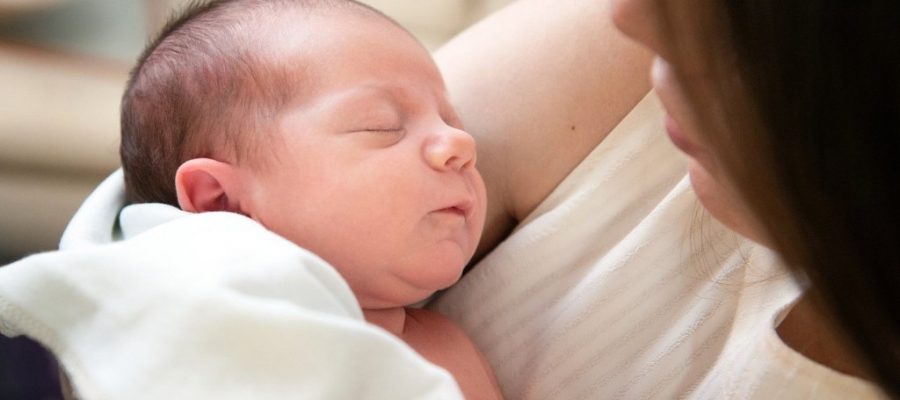When you have a baby, each pediatrician appointment is filled with endless questionnaires to determine their developmental milestones. Can they smile, are they sitting up, do they point at things? I remember checking “no” to babbling when my oldest son was little, and my pediatrician told me not to worry about it because the milestones only track what 50% of kids are doing at the time. I wondered why we even went through the milestones, as it was all very confusing!
The Centers for Disease Control and Prevention (CDC) and the American Academy of Pediatrics (AAP) want to simplify things for confused parents and help them better identify signs of autism and developmental delays in kids. The organizations recently updated their checklist for developmental milestones for infants and young children in their Learn the Signs. Act Early. program. This is the first time it’s been updated in years — and it could help parents and doctors identify delays sooner.
“The earlier a child is identified with a developmental delay the better, as treatment as well as learning interventions can begin,” said Paul H. Lipkin, M.D., FAAP, a member of the AAP Section on Developmental and Behavioral Pediatrics and Council on Children with Disabilities, in a press release.
“At the same time, we don’t want to cause unnecessary confusion for families or professionals,” he continued. “Revising the guidelines with expertise and data from clinicians in the field accomplishes these goals. Review of a child’s development with these milestones also opens up a continuous dialogue between a parent and the health care provider about their child’s present and future development.”
The previous developmental milestone checklists used 50th percentile milestones, which means only half of children can be expected to achieve that milestone by that age. According to the statement by AAP, “Clinicians reported that following the guideline often was not helpful to families who had concerns about their child’s development. In some cases, clinicians and families chose a wait-and-see approach, leading to a delay in diagnosis.”
The new developmental milestone checklists, which will be written in more accessible, family-friendly language, will identify behaviors that 75% or more children can be expected to exhibit at a certain age. This information is based on data, developmental resources, and clinician experience. More information on the process behind the revised milestones can be found in an article published in Pediatrics on Feb. 8, 2022.
Some of the changes to the new guidelines include:
- Adding checklists for ages 15 and 30 months; now there is a checklist for every well-child visit from 2 months to 5 years.
- Identifying additional social and emotional milestones (e.g., Smiles on their own to get your attention, age 4 months).
- Removing vague language like “may” or “begins” when referring to certain milestones.
- Removing duplicate milestones.
- Providing new, open-ended questions to use in discussion with families (e.g., Is there anything that your child does or does not do that concerns you?).
- Revising and expanding tips and activities for developmental promotion and early relational health.
For parents, milestone anxiety is scary. It’s stressful thinking your baby can’t do the same things as other babies their age — I completely get it! And while it’s important to remember that every baby is different and do things on their own pace, it’s still important to pay attention to their development. Early intervention on developmental concerns can have a significant impact on a child’s ability to learn new skills and increase their success in school and in life, according to the CDC.
Check out the free Learn the Signs. Act Early. resource online for more information. And if you are ever worried about something your baby is or is not doing, don’t hesitate to reach out to your pediatrician.
Before you go, check out our gallery on Cute & Stylish Kids Face Masks.

Source: Read Full Article
